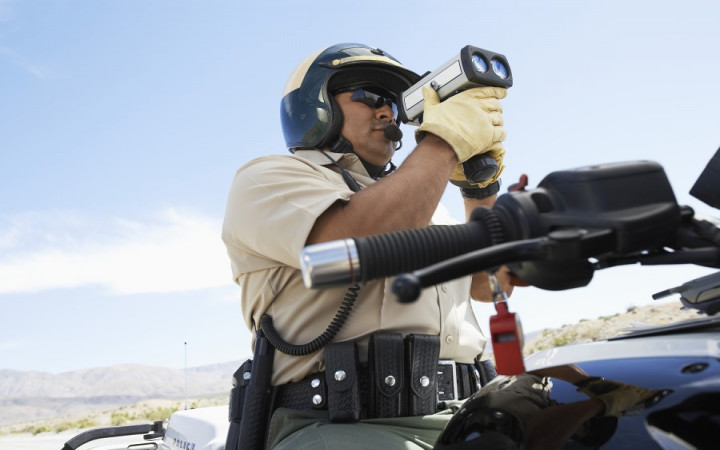Has this ever happened to you? You're driving along, minding your own business and be-bopping to your favorite tunes. Suddenly, you hear a siren. You look up and see a vehicle approaching quickly from behind you with red and blue lights flashing. You look down and realize you were traveling a wee bit faster than you had intended.
If you're not old enough to drive, you may have been a passenger in a vehicle when it was pulled over by the police for a moving violation. Not obeying the posted speed limit sometimes will get you a warning, but often it will get you an expensive ticket that you have to pay. So just exactly how do police know how fast you're going anyway?
Can they see your speedometer? Do they simply guess at how fast you're going? Or do they have an electronic gizmo that uses modern technology to determine your speed scientifically? If you guessed the latter, you're right on target. Police use sophisticated radar guns to check the speed of vehicles as they travel.
The technology at the heart of the radar gun is, of course, radar, which stands for Radio Detection And Ranging. Radar guns feature both a radio transmitter and receiver. A radar gun uses radio waves to detect and monitor moving objects. The radar gun transmits radio waves that bounce off of moving objects, which are in turn echoed back to the receiver on the radar gun.
For example, radar guns easily can tell you how far away a stationary object is. Since radio waves travel at a constant speed (the speed of light), the radar gun can calculate how far away an object is based upon how long it takes a radio wave to echo back from the object to its receiver.
Determining the speed of a moving object, however, requires a more advanced scientific calculation. This is because of the scientific phenomenon known as Doppler shift.
Radio waves have a certain frequency that stays the same if both the radar gun and vehicle are not moving. If the vehicle is moving, however, radio waves get reflected back at different points in space, changing the frequency of the wave pattern. If the vehicle is moving away from the radar gun, the frequency is lower. On the other hand, if the vehicle is moving toward the radar gun, the frequency increases.
The computer chip inside a radar gun calculates precisely how much the frequency of radio waves changes as they bounce off a moving vehicle. Factoring in the speed of the police car, if moving, the radar gun can then convert the frequency information into useful information: the speed of a moving vehicle!
Some police officers use even more high-tech gadgets known as lidar guns. Lidar stands for "LIght Detection And Ranging," because lidar guns use lasers consisting of infrared light beams to measure speed. Instead of measuring changes in frequency, lidar guns send out bursts of several hundred infrared laser beams in a fraction of a second to collect samples at multiple distances. A computer chip then compares these various distance samples to determine speed.
Thanks to modern technology, radar and lidar guns are very accurate. Although devices, known as radar detectors, have been invented to alert drivers to the use of radar and lidar guns while traveling, these detectors are not always effective and, in some areas, they're even illegal to use. If you want to avoid a speeding ticket, the best way is simply to slow down!





